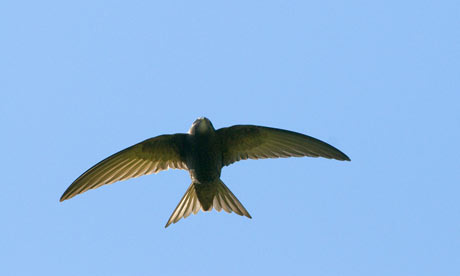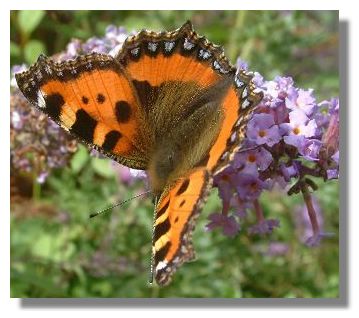
'Spring is incomplete for me – no, it does not even begin – until the swifts are back. I spend the last days of April and first few of May in a fever of anxiety, wondering if the most thrilling birds in Britain – whose return from Africa Ted Hughes said "means the globe’s still working , the Creation’s / Still waking refreshed" – will make it again this year. Evening means binocular peerings over the spires of the town, or dashes down to Sunnyside where our local birds have their biggest colonies, for a glimpse of those careering scimitar wings. If they’re late, which they increasingly are, it’s on to the websites for those with Swift Obsessive Disorder, and hopes for messages like that posted from Spain last May: "For those lacking common swifts in northern Europe, this afternoon was evidence of a huge arrival over Torremolinos." Sure enough, two days later they brought the Costa del Sol to our shores. Enough for emails to begin flashing between swift addicts: "They’re back."'
That's not me, of course; it's Richard Mabey. Anyone who has read his wonderful Nature Cure will know all about his very personal relationship with swifts, those deeply mysterious birds, and their epic journeys. Happily, I saw my first swift yesterday (they probably arrived over the south coast the day before - I haven't been able to find the swift addicts' website Mabey mentions. Anyone?). It was a single bird, gliding high up, with those occasional shivering motions of the wings as it swooped and turned. I haven't seen another since, but I'm sure they will soon be congregating in the skies.
Swifts for me are the soundtrack of many of my childhood memories, especially of those long summer evenings when, like all children in those days, I would have to go to bed while it was still broad daylight. As the bright evening light shone through the curtains, the swifts would be careering, screaming, past the window. They'd still be going when eventually I fell asleep - and they'd be the first thing I heard when I woke in the morning. Many years later, I lived on a similarly swift-haunted street, and one morning woke to find a swift trapped immobile, wings spread, between the two panes of the bedroom sash window, as if on an oversized microscope slide. It was an astonishing, faintly sinister sight - so strange to be seeing this always distant, always flying bird close up and stationary. After a while I managed to manoeuvre the two window panes into a position that offered the swift a way out - and off it flew like a shot from a gun, apparently unscathed by its strange experience. Heaven knows how it had managed to end up in such a strange position - presumably sheer reckless speed... It was not the only swift casualty of that house. When we came to move, I pulled out the wardrobe in the bedroom, and there behind it on the floor was a dead swift. It must have flown in through the window at speed and hurtled fatally into the bedroom wall. A swift death.












